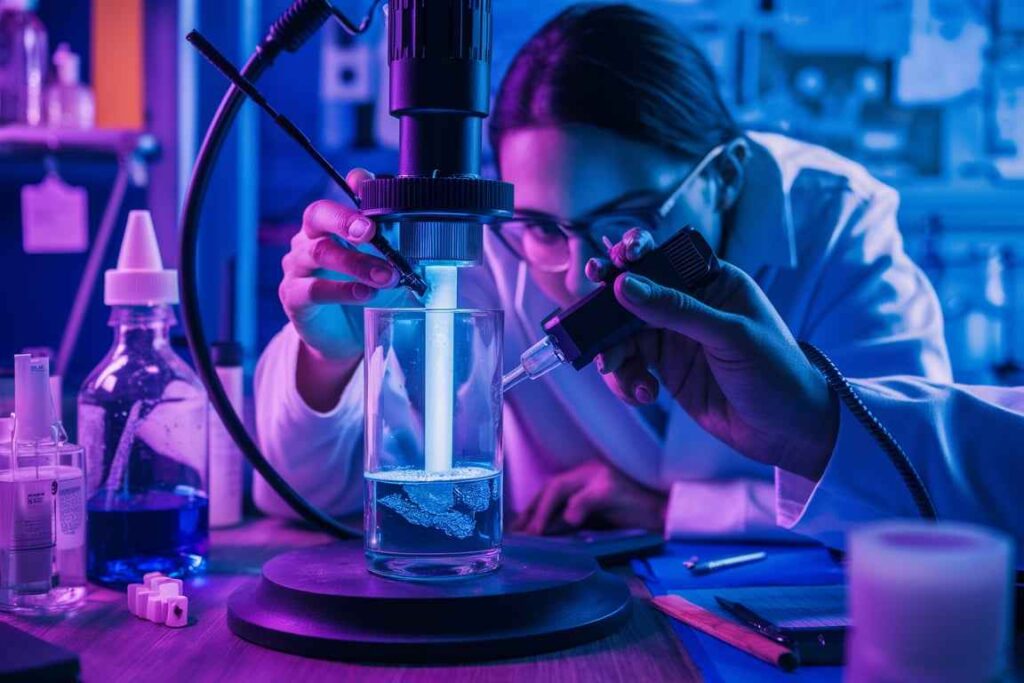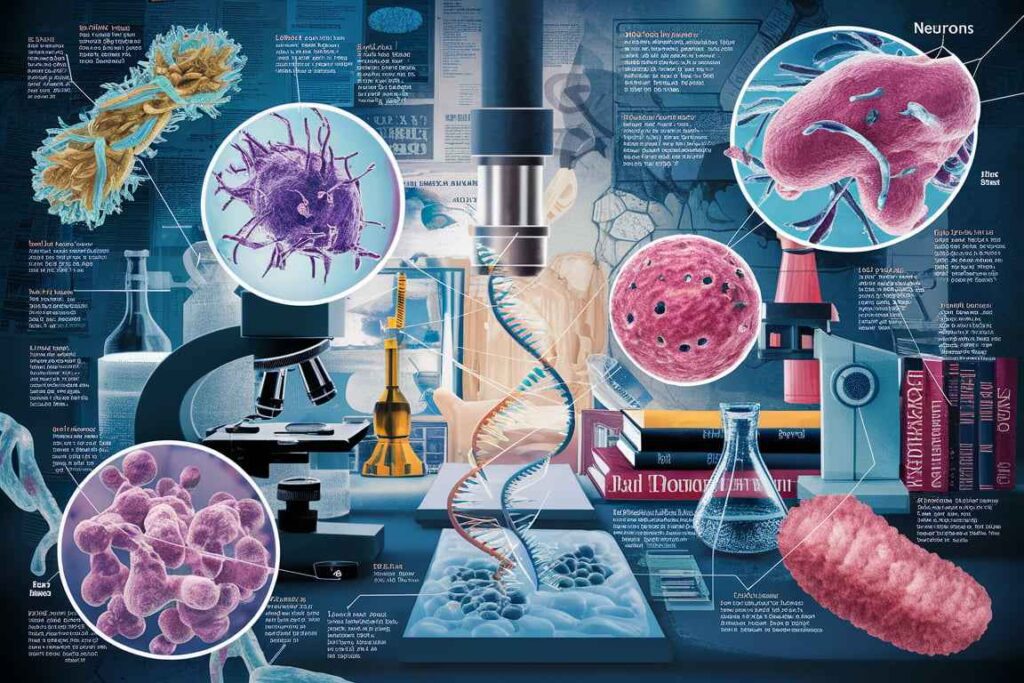Fluorimetry, also known as fluorescence spectroscopy, is a technique for determining the intensity of fluorescent light emitted by a sample when excited by a given wavelength of light. Fluorimetry works on the idea of fluorescence, which occurs when a molecule absorbs light at one wavelength (excitation) and releases light at a longer wavelength (emission).
Table of Contents
Fluorimetry
Fluorimetry is a potent and adaptable analytical technique that uses molecules’ fluorescence characteristics to detect and quantify a wide range of chemicals. Its great sensitivity and specificity make it useful in a variety of applications, including basic biological research, clinical diagnostics, environmental monitoring, and industrial quality control.

Excitation:
When a fluorophore (fluorescent molecule) absorbs photons of light, it moves from its ground state to an excited electronic state.
The wavelength of the absorbed light is unique to the fluorophore and is known as its excitation wavelength.
A fluorophore (fluorescent molecule) absorbs photons from an external light source, usually in the ultraviolet or visible range.
This absorption excites the fluorophore, transforming it from its ground state to an excited electronic state.
Emission:
- The excited fluorophore returns to its ground state by emitting photons of light with a larger wavelength, which is known as the emission wavelength.
- The Stokes shift refers to the difference in energy between absorbed and emitted light.
- After non-radiative relaxation, the fluorophore returns to its ground state by producing a photon with less energy (longer wavelength) than the absorbed light.
- This emitted light is referred to as the fluorescence signal, and its wavelength is known as the emission wavelength.
Detection:
The fluorimeter detects and measures the emitted light. The intensity of the produced light varies with the concentration of fluorescent molecules in the sample.
Applications:
Biological and Medical Research
- DNA and RNA Quantification: Fluorimetry is used to quantify nucleic acids using fluorescent dyes that bind specifically to DNA or RNA. Protein Assays: Detecting and quantifying proteins using fluorescent tags or dyes.
- Cell and Tissue Imaging: Visualizing cellular structures and processes using fluorescent probes and microscopy.

Clinical Diagnostics:
- Immunoassays: Detecting and quantifying antigens or antibodies in a sample using fluorescently labeled antibodies (e.g., ELISA).
- Disease Markers: Measuring levels of specific biomarkers in bodily fluids to diagnose diseases (e.g., cancer markers).
Environmental Monitoring:
- Pollutant Detection: Monitoring environmental pollutants, such as polycyclic aromatic hydrocarbons (PAHs) and heavy metals, using fluorescent sensors.
- Water Quality Testing: Detecting contaminants and pathogens in water samples.
Pharmaceutical Industry
- Drug Discovery: Screening potential drug candidates by measuring their interaction with target molecules using fluorescence-based assays.
- Pharmacokinetics: Studying the distribution and metabolism of drugs in biological systems.

Materials Science:
- Fluorescent Materials: Creating and characterizing fluorescent materials for use in optics and electronics.
- Nanotechnology is the study of nanoparticle characteristics and behaviors utilizing fluorescence.
Forensic science:
- Using fluorescent stains, crime scene investigators can detect trace amounts of biological materials (e.g., blood, semen).
- Document analysis entails authenticating and examining documents and banknotes with fluorescent inks and dyes.
Food and Drink Industry:
- Quality control involves using fluorescence-based technologies to detect the presence of additives, pollutants, and spoiling organisms in food products.
- Nutrient analysis is the process of quantifying vitamins and other nutrients found in food samples.
Frequently Asked Question
Define Fluorimetry
Fluorimetry is a potent and adaptable analytical technique that uses molecules’ fluorescence characteristics to detect and quantify a wide range of chemicals. Its great sensitivity and specificity make it useful in a variety of applications, including basic biological research, clinical diagnostics, environmental monitoring, and industrial quality control.
What are the applications of Fluorimetry?
The applications of Fluorimetry are
1. Biological and Medical Research
2. Clinical Diagnostics
3. Environmental Monitoring
4. Pharmaceutical Industry
5. Materials Science
Related Article


